Microorganisms-producers of biologically active agents Group: BT 15
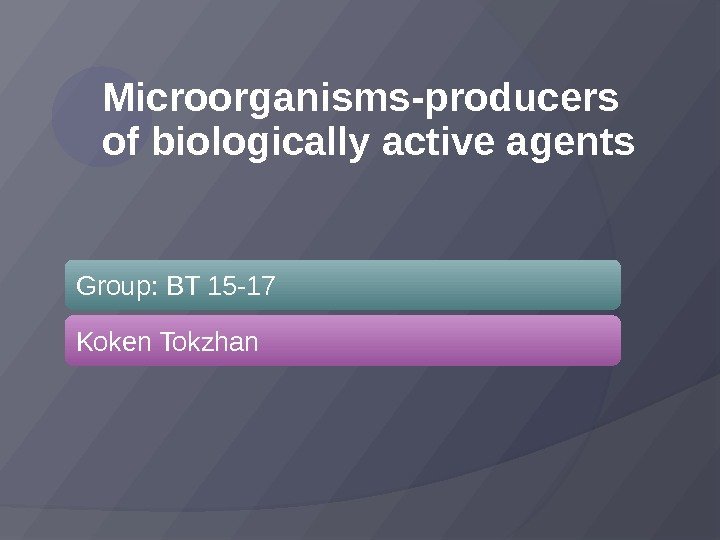
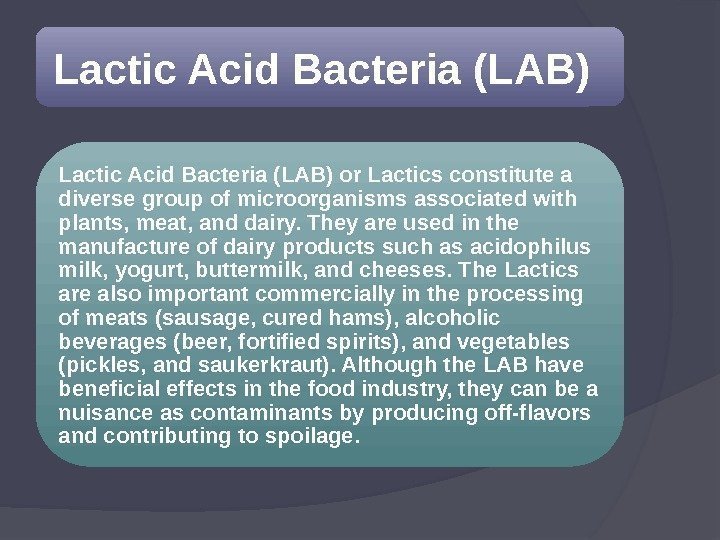
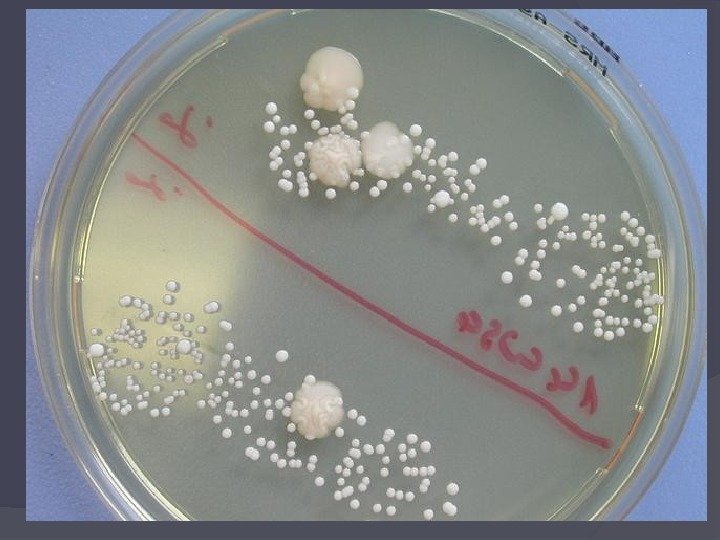
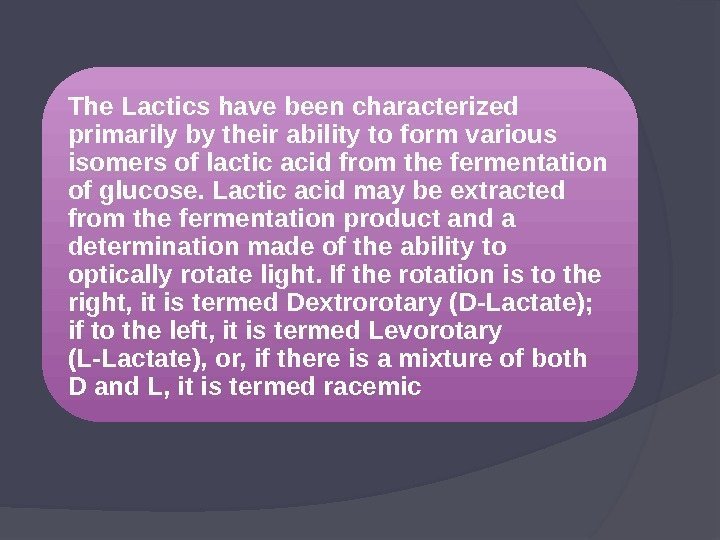
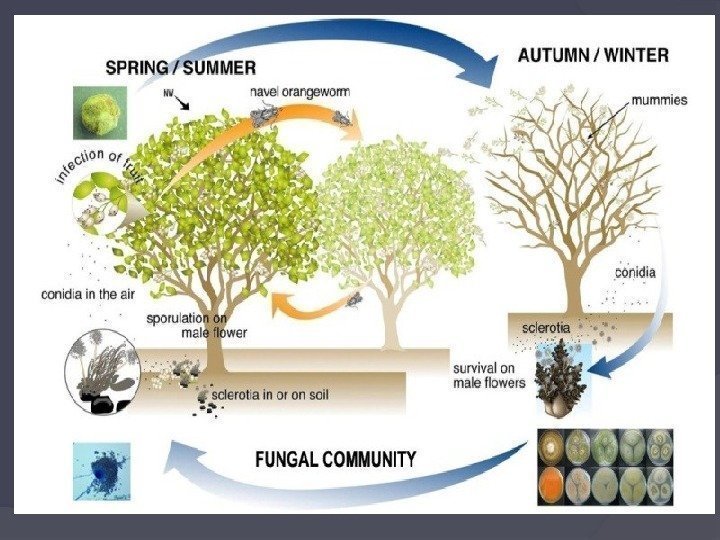
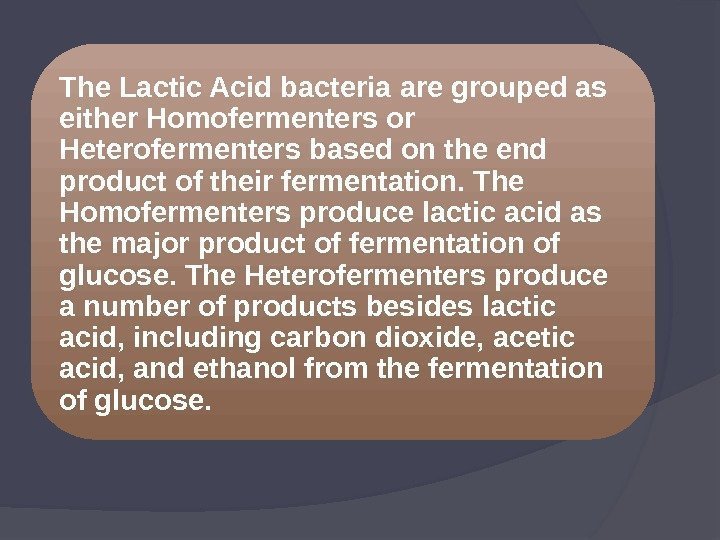

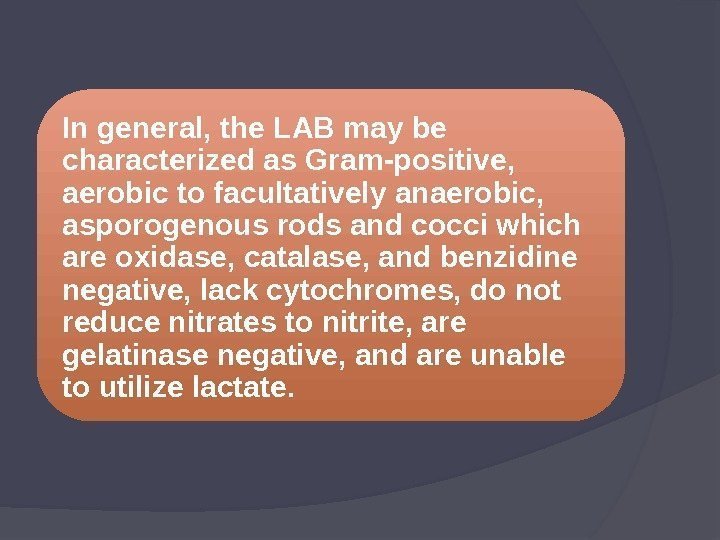
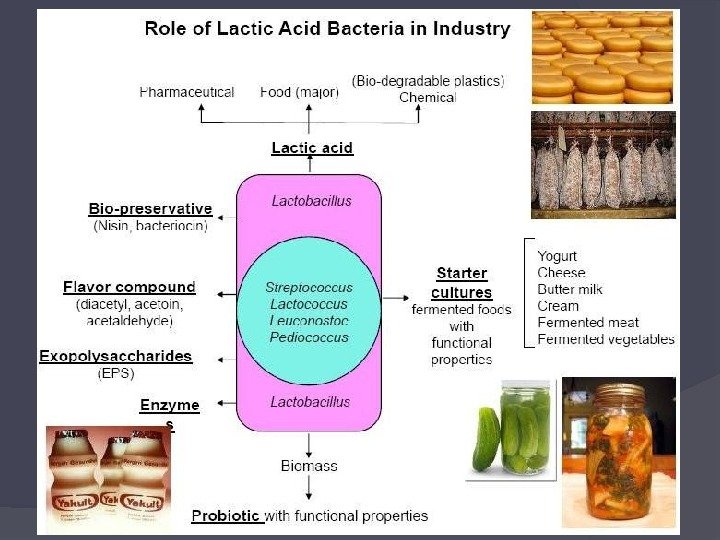



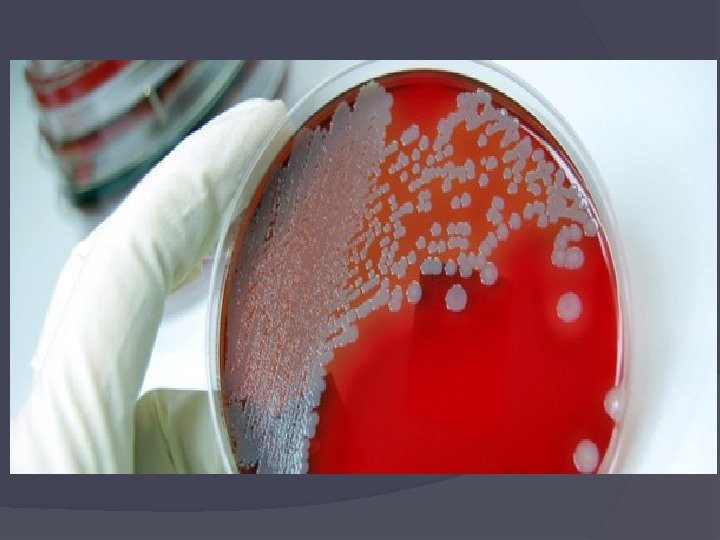
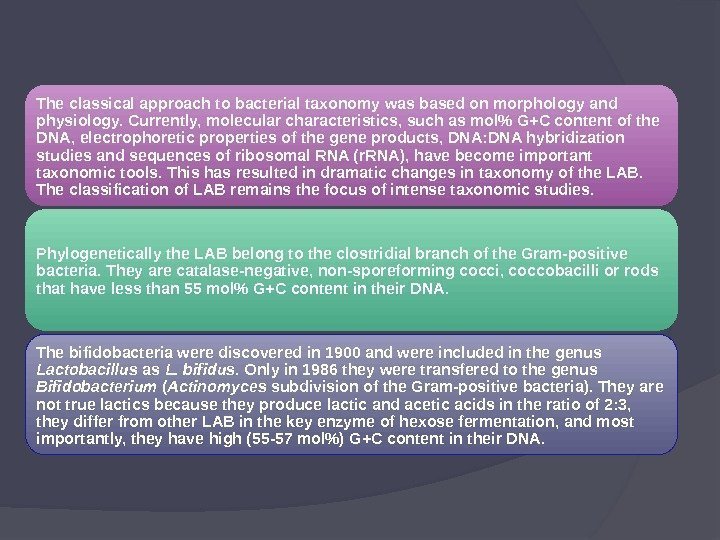
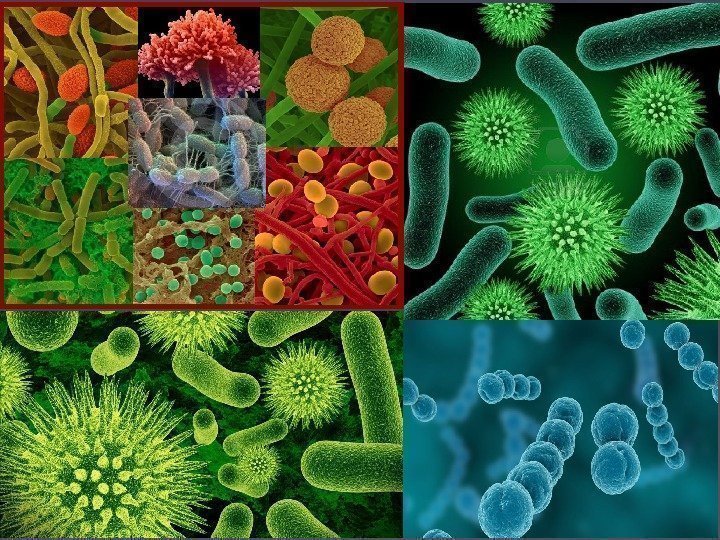

koken_t_bt_15-17_profes._english_presentation_microoorganisms.pptx
- Размер: 2.4 Мб
- Автор:
- Количество слайдов: 16
Описание презентации Microorganisms-producers of biologically active agents Group: BT 15 по слайдам
 Microorganisms-producers of biologically active agents Group: BT 15 -17 Koken Tokzhan
Microorganisms-producers of biologically active agents Group: BT 15 -17 Koken Tokzhan
 Lactic Acid Bacteria (LAB) or Lactics constitute a diverse group of microorganisms associated with plants, meat, and dairy. They are used in the manufacture of dairy products such as acidophilus milk, yogurt, buttermilk, and cheeses. The Lactics are also important commercially in the processing of meats (sausage, cured hams), alcoholic beverages (beer, fortified spirits), and vegetables (pickles, and saukerkraut). Although the LAB have beneficial effects in the food industry, they can be a nuisance as contaminants by producing off-flavors and contributing to spoilage.
Lactic Acid Bacteria (LAB) or Lactics constitute a diverse group of microorganisms associated with plants, meat, and dairy. They are used in the manufacture of dairy products such as acidophilus milk, yogurt, buttermilk, and cheeses. The Lactics are also important commercially in the processing of meats (sausage, cured hams), alcoholic beverages (beer, fortified spirits), and vegetables (pickles, and saukerkraut). Although the LAB have beneficial effects in the food industry, they can be a nuisance as contaminants by producing off-flavors and contributing to spoilage.

 The Lactics have been characterized primarily by their ability to form various isomers of lactic acid from the fermentation of glucose. Lactic acid may be extracted from the fermentation product and a determination made of the ability to optically rotate light. If the rotation is to the right, it is termed Dextrorotary (D-Lactate); if to the left, it is termed Levorotary (L-Lactate), or, if there is a mixture of both D and L, it is termed racemic
The Lactics have been characterized primarily by their ability to form various isomers of lactic acid from the fermentation of glucose. Lactic acid may be extracted from the fermentation product and a determination made of the ability to optically rotate light. If the rotation is to the right, it is termed Dextrorotary (D-Lactate); if to the left, it is termed Levorotary (L-Lactate), or, if there is a mixture of both D and L, it is termed racemic

 The Lactic Acid bacteria are grouped as either Homofermenters or Heterofermenters based on the end product of their fermentation. The Homofermenters produce lactic acid as the major product of fermentation of glucose. The Heterofermenters produce a number of products besides lactic acid, including carbon dioxide, acetic acid, and ethanol from the fermentation of glucose.
The Lactic Acid bacteria are grouped as either Homofermenters or Heterofermenters based on the end product of their fermentation. The Homofermenters produce lactic acid as the major product of fermentation of glucose. The Heterofermenters produce a number of products besides lactic acid, including carbon dioxide, acetic acid, and ethanol from the fermentation of glucose.

 In general, the LAB may be characterized as Gram-positive, aerobic to facultatively anaerobic, asporogenous rods and cocci which are oxidase, catalase, and benzidine negative, lack cytochromes, do not reduce nitrates to nitrite, are gelatinase negative, and are unable to utilize lactate.
In general, the LAB may be characterized as Gram-positive, aerobic to facultatively anaerobic, asporogenous rods and cocci which are oxidase, catalase, and benzidine negative, lack cytochromes, do not reduce nitrates to nitrite, are gelatinase negative, and are unable to utilize lactate.

 Orla and Jensen also divided the Lactobacilli into the three groups (the Thermobacteria, Streptobacteria, and the Betabacteria) based on growth temperature and biochemical reactions. Although those three groups have been replaced for the most part, the three names are still in common use and are defined according to growth temperature, ability to ferment pentoses, ability to produce carbon dioxide from glucose or gluconate, requirement for thiamine, formation of lactic acid as a major product of fermentation, Homofermentative or Heterofermentative type of fermentation, reduction of fructose to mannitol, and hydrolysis of arginine.
Orla and Jensen also divided the Lactobacilli into the three groups (the Thermobacteria, Streptobacteria, and the Betabacteria) based on growth temperature and biochemical reactions. Although those three groups have been replaced for the most part, the three names are still in common use and are defined according to growth temperature, ability to ferment pentoses, ability to produce carbon dioxide from glucose or gluconate, requirement for thiamine, formation of lactic acid as a major product of fermentation, Homofermentative or Heterofermentative type of fermentation, reduction of fructose to mannitol, and hydrolysis of arginine.

 The many properties of LAB — ability to provide health benefits, their roles in the food industry (spoilage or starter cultures), potential pathogenicity — are strain-specific. Numerous strains are continuously screened for desirable characteristics.
The many properties of LAB — ability to provide health benefits, their roles in the food industry (spoilage or starter cultures), potential pathogenicity — are strain-specific. Numerous strains are continuously screened for desirable characteristics.

 The classical approach to bacterial taxonomy was based on morphology and physiology. Currently, molecular characteristics, such as mol% G+C content of the DNA, electrophoretic properties of the gene products, DNA: DNA hybridization studies and sequences of ribosomal RNA (r. RNA), have become important taxonomic tools. This has resulted in dramatic changes in taxonomy of the LAB. The classification of LAB remains the focus of intense taxonomic studies. Phylogenetically the LAB belong to the clostridial branch of the Gram-positive bacteria. They are catalase-negative, non-sporeforming cocci, coccobacilli or rods that have less than 55 mol% G+C content in their DNA. The bifidobacteria were discovered in 1900 and were included in the genus Lactobacillus as L. bifidus. Only in 1986 they were transfered to the genus Bifidobacterium ( Actinomyces subdivision of the Gram-positive bacteria). They are not true lactics because they produce lactic and acetic acids in the ratio of 2: 3, they differ from other LAB in the key enzyme of hexose fermentation, and most importantly, they have high (55 -57 mol%) G+C content in their DNA.
The classical approach to bacterial taxonomy was based on morphology and physiology. Currently, molecular characteristics, such as mol% G+C content of the DNA, electrophoretic properties of the gene products, DNA: DNA hybridization studies and sequences of ribosomal RNA (r. RNA), have become important taxonomic tools. This has resulted in dramatic changes in taxonomy of the LAB. The classification of LAB remains the focus of intense taxonomic studies. Phylogenetically the LAB belong to the clostridial branch of the Gram-positive bacteria. They are catalase-negative, non-sporeforming cocci, coccobacilli or rods that have less than 55 mol% G+C content in their DNA. The bifidobacteria were discovered in 1900 and were included in the genus Lactobacillus as L. bifidus. Only in 1986 they were transfered to the genus Bifidobacterium ( Actinomyces subdivision of the Gram-positive bacteria). They are not true lactics because they produce lactic and acetic acids in the ratio of 2: 3, they differ from other LAB in the key enzyme of hexose fermentation, and most importantly, they have high (55 -57 mol%) G+C content in their DNA.

 THANKS FOR ATTENTION!!!!!!
THANKS FOR ATTENTION!!!!!!
